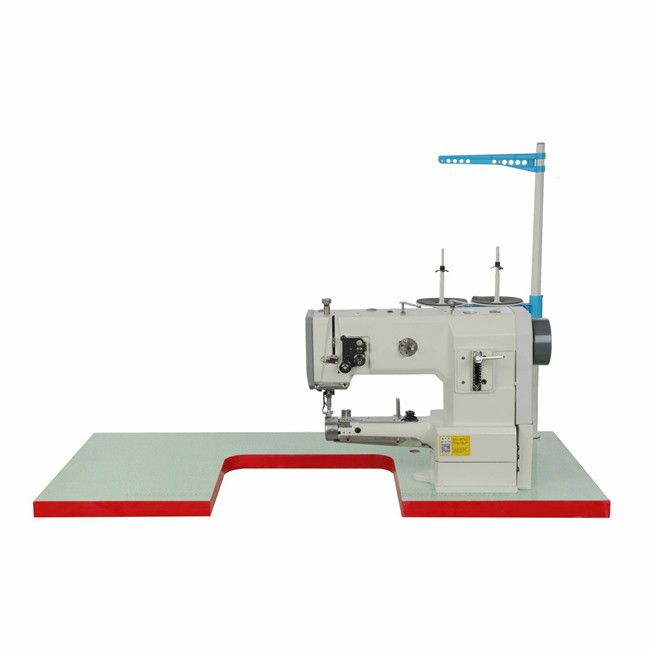High Quality Industrial Direct Drive Auto Trimmer Sewing Machine
Product description
In addition to basic functions such as flat sewing, edge locking, and patching, computer sewing machines can also set specific sewing parameters according to user needs, and even customize sewing programs to sew different patterns and styles. This programmability makes computer sewing machines have great potential in the field of personalized customization. Computer sewing machines focus on optimizing low noise and low vibration in the design and manufacturing process, making the machine run more smoothly and quietly, providing a better working environment for operators.

The computer sewing machine uses an electrically controlled stepper motor to control the sewing action. After the power is turned on, the motor starts to run, and the controller sends instructions to the motor drive mechanism to control its forward and reverse rotation, thereby achieving the up and down movement of the needle and synchronously controlling the feed of the fabric. This operation control based on an electrically controlled stepper motor closely correlates the sewing speed with the motor operating speed, achieving precise and efficient sewing operations.

On the vast stage of the textile and garment industry, industrial sewing machines, as the core production equipment, continue to drive the progress and development of the industry with their efficient, precise, and diversified sewing capabilities. Flat sewing machine is the most common type of industrial sewing machine used for sewing straight and simple curves, widely used in clothing, luggage, footwear and other fields.

In the mid to low end sewing machine products, the world sewing machine industry has completed its transfer to China, and the industrial transfer is gradually extending to mid to high end products. In the Chinese market, there is a wide variety of types and brands of sewing machines available, meeting the needs of different consumers. Sewing machines, as an important sewing tool, play a crucial role in fields such as textiles, clothing, and home furnishings. With the continuous advancement of technology and the diversification of consumer demands, the functions and types of sewing machines are also constantly enriched and improved.

The working principle of a sewing machine mainly includes four steps: thread transfer, pinhole formation, stitch formation, and fabric transfer. The sewing machine provides two threads, upper and lower, through a spool, which enter the machine body through a guide, tensioner, and spool to ensure smooth thread transfer. The sewing machine forms needle holes through the reciprocating motion of the upper and lower needles. When the needle moves downwards, the upper needle passes the thread through the fabric through the thread plate and the lower needle eye plate, forming a needle eye. The formation of a trace depends on the interweaving of online and offline lines. When the upper needle passes down through the fabric, it will thread the upper thread through the fabric and interweave with the lower thread in the needle eye, forming a stitch. The sewing machine transfers fabric through the lower hem, upper hem, and gear transmission. When the gear rotates, the lower swing and upper swing move alternately, conveying the fabric forward.

Recommended products



